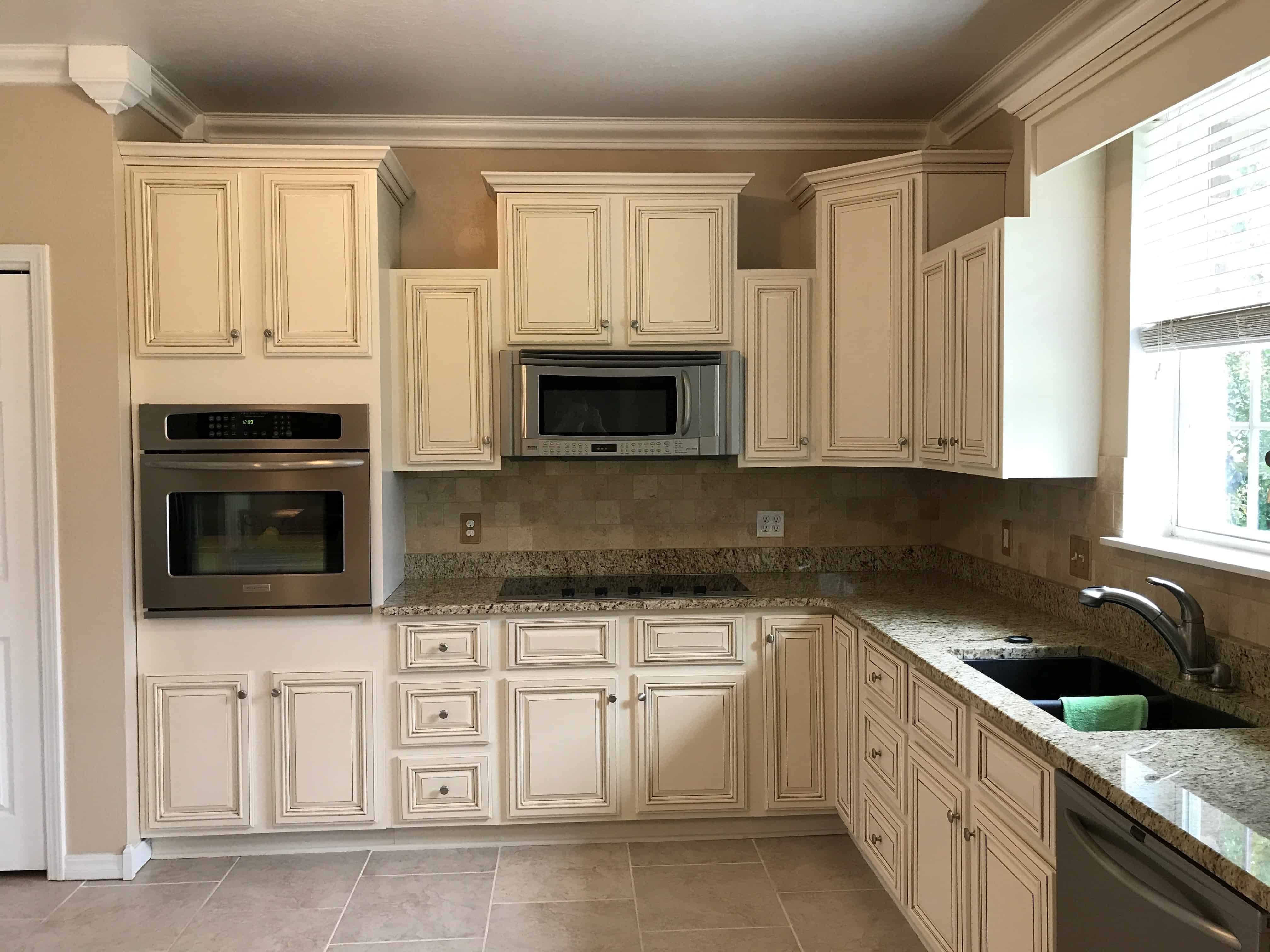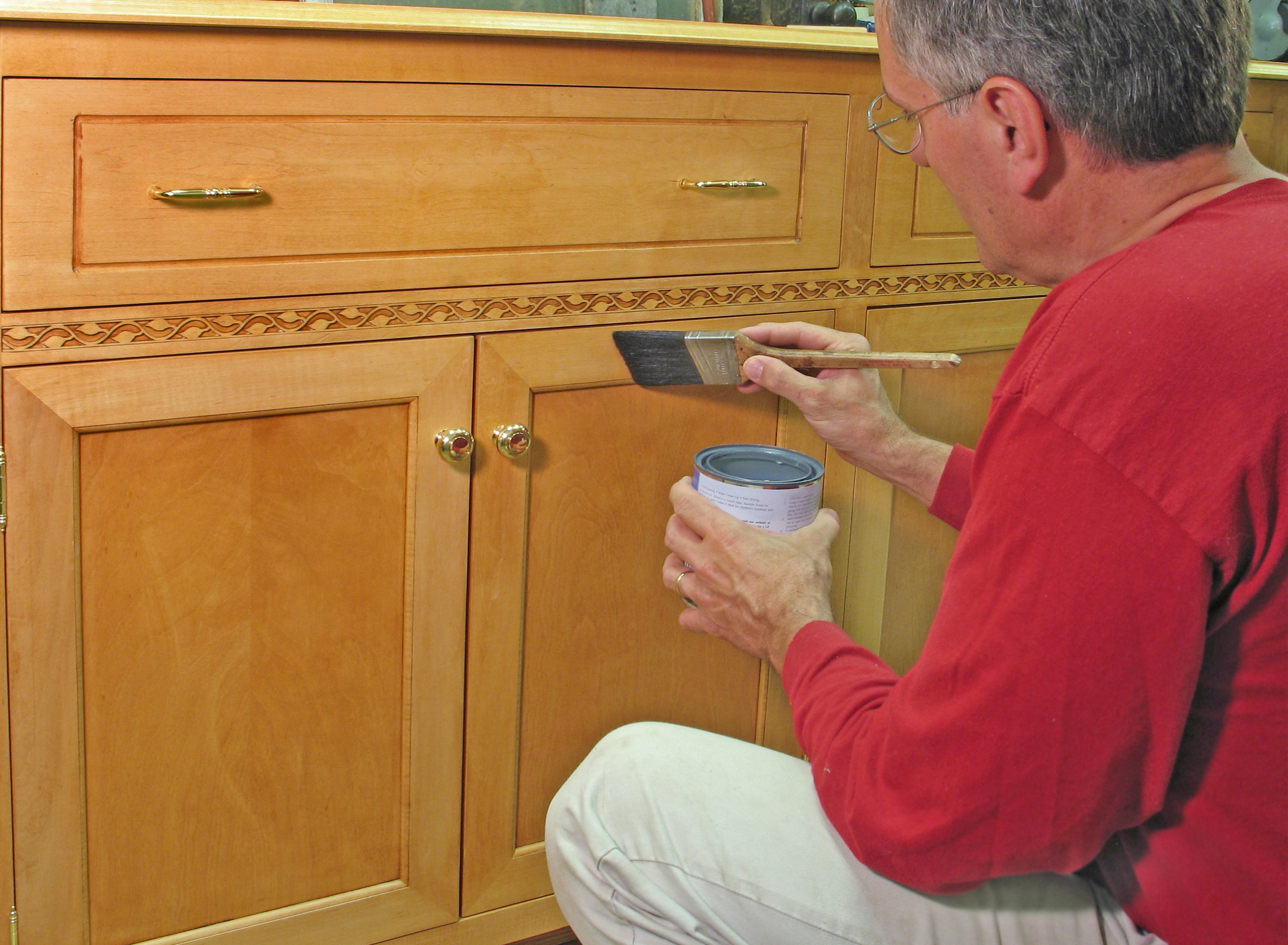Choosing the Right Paint for Cabinets and Trim

Selecting the appropriate paint for your cabinets and trim is crucial for achieving a durable, beautiful, and long-lasting finish. The choice depends on several factors, including the type of surface being painted, the desired level of durability, and your budget. Understanding the properties of different paint types will help you make an informed decision.
Paint Type Comparison for Cabinets and Trim
The following table compares common paint types suitable for cabinets and trim, highlighting their strengths and weaknesses. Consider these factors when choosing a paint for your project.
| Paint Type | Durability | Cleanability | Drying Time | Cost |
|---|---|---|---|---|
| Oil-Based Alkyd | Excellent; very hard and durable finish, resistant to scratches and chipping. | Difficult; requires mineral spirits for cleanup. | Slow; may require multiple coats and longer drying time between coats. | High |
| Water-Based Latex | Good; provides a durable finish, though less resistant to scratches than oil-based paint. | Easy; cleans up with soap and water. | Fast; allows for quicker completion of projects. | Moderate |
| Acrylic-Alkyd Hybrid | Excellent; combines the durability of alkyd with the easy cleanup of latex. | Easy; cleans up with soap and water. | Moderate; faster than alkyd, slower than some latex paints. | High |
| Acrylic Latex (High-Quality) | Very Good; durable, especially with proper preparation and multiple coats. | Easy; cleans up with soap and water. | Fast; quick drying time makes for efficient painting. | Moderate to High (depending on brand and quality) |
Interior vs. Exterior Paint for Cabinets and Trim
Interior and exterior paints are formulated differently to withstand specific environmental conditions. Using exterior paint indoors is generally unnecessary and can lead to unwanted odors. Conversely, interior paint lacks the UV protection and weather resistance required for outdoor use. Always select paint specifically labeled for its intended application. For cabinets and trim located in areas exposed to high humidity, such as bathrooms, choose a paint with mildew-resistant properties.
Primer Selection for Various Cabinet and Trim Materials
Proper primer selection is critical for ensuring paint adhesion and a smooth, even finish. Different materials require different primers. For example, wood typically benefits from a wood primer to seal the surface and prevent tannins from bleeding through the paint. MDF (medium-density fiberboard), a common cabinet material, often requires a stain-blocking primer to prevent the absorption of paint and ensure a uniform color. Primers specifically designed for plastics or metal are necessary for those materials, ensuring proper adhesion and preventing peeling. Using the correct primer for the substrate significantly improves the longevity and appearance of the final paint job.
Cabinet and Trim Painting Techniques

Painting cabinets and trim can dramatically enhance the look of your home, but achieving a professional finish requires careful preparation and technique. This guide Artikels the steps involved, from surface preparation to final cleanup, ensuring a smooth, even result that will stand the test of time. Proper technique minimizes common problems like brushstrokes and drips, leading to a beautiful, long-lasting paint job.
Surface Preparation, Cabinet and trim paint
Thorough surface preparation is paramount for a successful paint job. Failing to properly prepare the surfaces will result in a less durable and aesthetically pleasing finish. This stage involves cleaning, sanding, and priming, all crucial steps to ensure the paint adheres properly and provides a smooth, even coat.
- Clean the surfaces thoroughly with a degreaser to remove any dirt, grease, or grime. Allow to dry completely.
- Lightly sand the surfaces with fine-grit sandpaper (180-220 grit) to create a smooth surface and improve paint adhesion. Remove sanding dust with a tack cloth.
- Fill any holes or imperfections with wood filler, allowing it to dry completely before sanding smooth.
- Apply a high-quality primer designed for cabinets and trim. This will ensure better paint adhesion and provide a uniform base coat, especially important when painting over dark colors or previously painted surfaces.
Paint Application Methods
Several methods can be used to apply paint to cabinets and trim, each with its advantages and disadvantages. The best method depends on the size of the project, your experience level, and the desired finish.
- Brush: Brushes offer excellent control and are ideal for detailed work, such as trim and intricate cabinet details. Use high-quality brushes with synthetic bristles for smooth application.
- Roller: Rollers are efficient for larger surfaces like cabinet doors and flat trim. Use a high-quality roller cover designed for smooth surfaces to minimize texture.
- Sprayer: Sprayers provide a fast and even finish, particularly suitable for large projects. However, they require more preparation and cleanup, and improper use can lead to runs and drips. Consider using a sprayer only if you have experience with this method.
Achieving a Smooth, Even Finish
Achieving a smooth, even finish requires attention to detail and proper technique throughout the painting process. Careful application and the right tools are key to avoiding common problems.
- Apply thin, even coats, allowing each coat to dry completely before applying the next. Multiple thin coats are preferable to one thick coat, which can lead to drips and runs.
- Maintain a wet edge to avoid lap marks and brushstrokes. This means keeping the freshly applied paint wet as you move to the next section.
- Use a high-quality paint designed for cabinets and trim. These paints are formulated for durability and a smooth finish.
- For brush application, use smooth, even strokes in one direction. Avoid applying too much pressure.
- For roller application, use even pressure and overlap strokes slightly.
Proper Taping Techniques
Precise masking is crucial to prevent paint from getting onto areas you don’t want to paint. Proper taping techniques ensure clean lines and a professional look.
Imagine a cabinet door with a decorative edge. First, carefully press a strip of high-quality painter’s tape along the edge of the decorative trim, ensuring the tape adheres firmly to the surface. Smooth the tape with your finger to remove any air bubbles, which can cause paint seepage. The tape should form a clean, straight line. Next, extend the tape onto the surrounding area, creating a border. This process is repeated around the entire trim or area you wish to protect. The same meticulous approach should be used for taping around door knobs, hinges, and other hardware. Ensure the tape creates a tight seal to prevent bleed-through. After painting, remove the tape while the paint is still slightly wet to avoid pulling up the paint.
Color Selection and Design Considerations: Cabinet And Trim Paint
Choosing the right colors for your cabinets and trim is crucial for creating a harmonious and visually appealing space. The colors you select will significantly impact the overall mood and feel of your room, influencing everything from its perceived size to its level of formality. Careful consideration of color palettes, their interaction with lighting, and coordination with other design elements is key to a successful paint project.
Color palettes for cabinets and trim are diverse and depend heavily on the style of the room and the amount of natural and artificial light it receives. Darker colors can create a dramatic and sophisticated atmosphere, while lighter colors often make a room feel more open and airy. The interplay of these factors determines the most effective color choices.
Popular Color Palettes for Cabinets and Trim
Numerous color palettes are suitable for cabinets and trim. Warm neutrals such as creamy whites, soft beiges, and greige (a blend of gray and beige) create a timeless and inviting feel, complementing a variety of design styles. These colors work particularly well in rooms with limited natural light, as they reflect light effectively. Conversely, cool neutrals, including various shades of gray and blue-gray, offer a modern and sophisticated look, especially in rooms with ample natural light. Bold colors, such as navy blue, deep green, or charcoal gray, can add drama and personality, but should be used thoughtfully, considering the overall size and lighting of the room. For example, a dark navy blue might be stunning in a large kitchen with plenty of windows, but could feel overwhelming in a small, dimly lit bathroom.
Coordinating Cabinet and Trim Colors with Wall Colors and Other Elements
A cohesive color scheme is achieved by carefully coordinating the colors of your cabinets and trim with the wall color, flooring, and other design elements in the room. For instance, a kitchen with white cabinets and trim paired with soft gray walls and light wood flooring creates a clean, modern, and airy feel. The white acts as a neutral backdrop, allowing the gray walls to subtly anchor the space, while the light wood adds warmth. In contrast, a living room with dark navy blue cabinets and crisp white trim against pale beige walls could create a sophisticated and slightly formal ambiance. The white trim brightens the room and prevents the navy from feeling too heavy, while the beige walls offer a grounding element. Another example could involve a warm, rustic kitchen with honey-toned oak cabinets and creamy white trim. The warm wood tones paired with the creamy white creates a welcoming and inviting atmosphere, potentially complemented by terracotta-colored walls and darker wood flooring. The key is to maintain a sense of balance and harmony, preventing any single element from overwhelming the others.
Cabinet and Trim Paint Colors: A Practical Guide
[Insert Article Text Here – Remember to remove all references to AI tools from the provided article text before pasting it here.]
